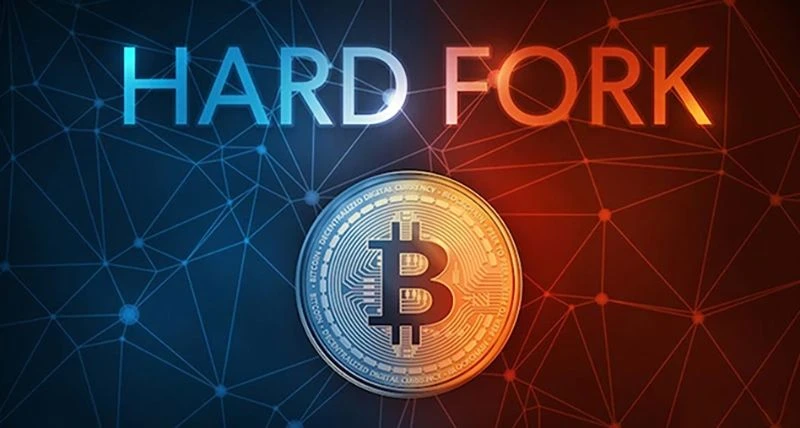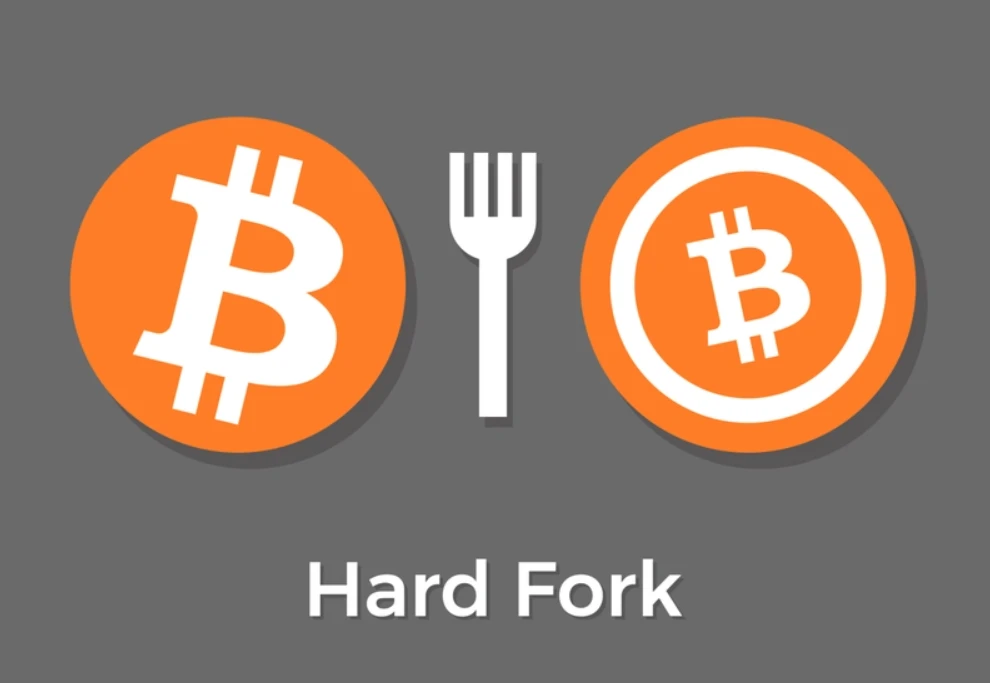If you are researching or investing in the cryptocurrency market, you must have heard of soft fork, hard fork updates of Bitcoin, Ethereum, Litecoin, etc. Have you ever wondered what a fork is? Let me take you through the following article to help you understand!

What is a Fork?
In the blockchain, "fork" is the process of changing the underlying protocol or rules of the blockchain. When a software is copied and modified, a fork occurs. When this happens, the blockchain splits and creates a new blockchain, but still retains the same historical records as the original blockchain. However, the new blockchain will operate under different rules.
Forks can be intentional or unintentional. When there is a disagreement in the community about how the blockchain should operate, a fork occurs. When a fork occurs, the community decides which blockchain to continue using and which blockchain will become the dominant one. Through a soft fork, both blockchains can continue to exist.
Forks may be a controversial topic in the blockchain community, while others believe they can be confusing and harmful.
Purpose of Fork
The purpose of forking the blockchain may vary, but there are generally three basic reasons:
- Blockchain Upgrade: Forks can be used to improve the blockchain, fix security vulnerabilities, add new features, or change the consensus mechanism. For example, the 2017 Bitcoin Cash fork aimed to increase the block size limit, allowing the blockchain to process more transactions per second.
- Creating New Coins: Forks can also be used to create new cryptocurrencies. This is achieved by copying the blockchain of an existing cryptocurrency and then changing the protocol.
For example, the 2016 Ethereum Classic fork occurred in the Ethereum community due to a disagreement on how to handle the DAO smart contract hack event. Or more recently, Ethereum PoW (ETHW) forked from Ethereum because miners disagreed with the proposal to switch to a PoS mechanism.
Testing New Ideas: Forks can also be used to test new ideas. This is because forking allows developers to test changes to the blockchain without affecting the main chain.
For example, the 2017 Bitcoin SegWit2x fork aimed to test a new way of processing transactions on the Bitcoin blockchain.
Example: The 2017 Bitcoin SegWit2x fork tested a new way of processing transactions on the Bitcoin blockchain.
Advantages
- Enhanced Security: Forks can be used to fix security vulnerabilities in the blockchain.
For example, the goal of the Bitcoin Cash fork was to increase the block size limit, making the blockchain more resistant to attacks.
For example, the Bitcoin Cash fork aimed to increase the block size limit, which would make the blockchain more resistant to attacks.
- New Features: Forks can be used to add new features to the blockchain.
For example, the Ethereum Classic fork added a new feature called "replay protection" to prevent attackers from stealing funds from both Ethereum and Ethereum Classic.
For example, the Ethereum Classic fork added a new feature called "replay protection" to prevent attackers from stealing funds from both Ethereum and Ethereum Classic.
- Enhanced Decentralization: Forks enhance the decentralization of the blockchain by allowing the creation of a new blockchain that can be run by different groups of people.
Example: Bitcoin Cash was created and run by a different group of people using the Bitcoin blockchain.
Weaknesses
- Confusion: Forks may lead to chain splits, confusion, and user disruption.
- Loss of Funds: If users do not upgrade their software to the new version of the blockchain, forks can also lead to loss of funds. In 2017, some users were unable to access funds on the Bitcoin Cash blockchain after the fork because they did not upgrade their software.
Hard Fork and Soft Fork
What is a Hard Fork?
A hard fork is a software upgrade that is incompatible with the old version of the blockchain, requiring all nodes to update their software to continue participating in the network. This means that nodes running on the new version of the blockchain will not be able to receive transaction data executed on the old version, and vice versa.
During a hard fork, the blockchain splits into two independent versions: one following the new rules, and the other following the old rules.
For example, Ethereum experienced a hard fork in 2016, resulting in the creation of two branches: Ethereum and Ethereum Classic.
What is a Soft Fork?
A soft fork is a software upgrade that is backward compatible with the old version of the blockchain, meaning that old nodes can continue to participate in the network without needing to update their software, while updated nodes can still communicate with old nodes.
Soft forks typically add a new rule that does not conflict with the old rules. For example, Bitcoin underwent a soft fork in 2017 to increase the block size limit. In this case, nodes that did not upgrade their software could still participate under the old rules but could not participate in the new consensus rules.
Which is Better: Hard Fork or Soft Fork?
Hard forks and soft forks are both ways to change the blockchain protocol, but they each have their own advantages and disadvantages.
Hard forks are more destructive than soft forks because they require all users to upgrade their software to continue participating in the network. Meanwhile, soft forks are less destructive than hard forks because they do not require all users to upgrade their software.
The choice between the two types depends on the specific situation. If the goal is to make significant changes to the blockchain protocol, a hard fork may be necessary. However, if the goal is to make minor changes or test new ideas, a soft fork may be the better choice. Ultimately, the decision to use a hard fork or soft fork depends on the developers and the cryptocurrency community.
History of Hard Forks in Bitcoin

Bitcoin XT (2014): Bitcoin XT was a hard fork proposed by Mike Hearn. Its goal was to increase the block size limit from 1MB to 8MB. However, this hard fork failed as the majority of miners and users chose to stay on the original Bitcoin blockchain.
Bitcoin Classic (2015): Bitcoin Classic was another hard fork aimed at increasing the block size limit. This fork was more successful than Bitcoin XT but still did not receive support from the majority of users.
Bitcoin Cash (2017): Bitcoin Cash is the most successful Bitcoin hard fork to date. It was created by a group of miners and developers dissatisfied with the slow transaction confirmation times and high fees on the Bitcoin network. The block size limit of the Bitcoin Cash blockchain has been increased to 8MB, and several other changes have been made.
Bitcoin Satoshi's Vision (2018): Bitcoin Satoshi's Vision is a hard fork of Bitcoin Cash created by a group of miners and developers with the aim of increasing the block size limit to 128MB and making some other changes.
Bitcoin Cash SV (2018): Bitcoin Cash SV is another fork of Bitcoin Cash, through which the block size limit of the Bitcoin blockchain has been increased to 1GB, and several other changes have been made.
Conclusion
Hard forks and soft forks are two important factors in ensuring the sustainable success of the blockchain. They allow us to make changes and upgrades to the blockchain system without the need for third-party intervention. Through this article, it is hoped that readers will have a better understanding of forks, soft forks, and hard forks, enabling them to be more adept in their research and investment processes.
免责声明:本文章仅代表作者个人观点,不代表本平台的立场和观点。本文章仅供信息分享,不构成对任何人的任何投资建议。用户与作者之间的任何争议,与本平台无关。如网页中刊载的文章或图片涉及侵权,请提供相关的权利证明和身份证明发送邮件到support@aicoin.com,本平台相关工作人员将会进行核查。




